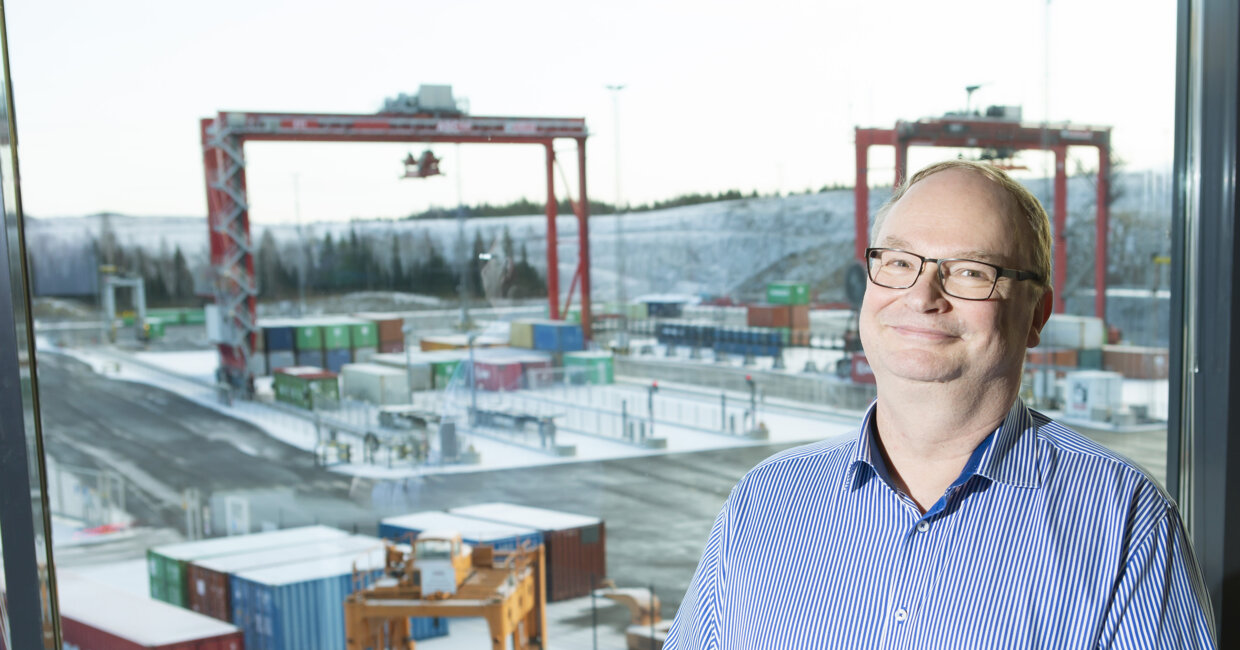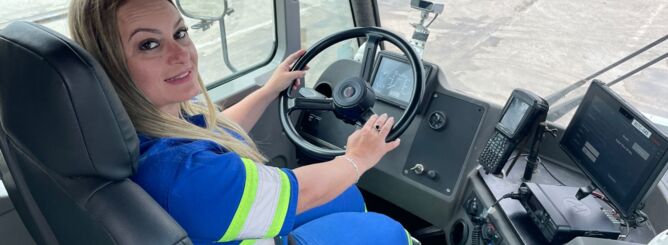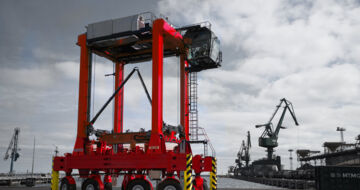5G enables mission-critical wireless connectivity for ports and terminals
Kalmar is actively researching the future possibilities of 5G technology in ports and terminals. High-bandwidth, low-latency connectivity is expected to open up significant new possibilities for both terminal operators and system providers over the next few years.
Pekka Yli-Paunu leads Kalmar’s automation research team. As one of the research avenues, his team is collaborating with Nokia and Finland's national research institution VTT to research and test 5G technology and its applications for terminal operations.
We spoke to Mr. Yli-Paunu about his current work with 5G technology as well as the reasons why Kalmar is investing in 5G.
Why is Kalmar investing in 5G technology right now?
Mobile technology really became a potential game changer for us with the advent of private 4G LTE (Long Term Evolution) networks. In public networks, bandwidth and network management can easily create bottlenecks for mission-critical industrial applications. Private LTE networks enable ports and terminals to have their own high-performance mobile networks that can then be administered by mobile operators or other system providers.
The possibilities of private LTE networks were already apparent with the first test deployments that we did with 4G technology, but 5G is really taking things to the next level. Private LTE connectivity is more reliable and secure than Wi-Fi, and 5G is now genuinely enabling the low-latency, high-capacity connectivity and giving possibilities to make edge computing in same server where 5G core is running that is required for time-sensitive critical industrial applications using real-time analytics and multiple high-resolution video feeds.
One of the first use cases for the technology is wireless remote control for container handling machines, but the technology will enable countless other applications as well. Basically we are now able to build robust digital industrial environments that depend on secure and reliable wireless connectivity, yet are not tied down by a physical cabling infrastructure.
In our own product range, one of the first uses for 5G connectivity will be in enabling wireless control of rubber-tyred gantry cranes. Until now, RTGs have been dependent on a fibre-optic cable reel system for remote control, which of course complicates the process of moving the machine between container stacks. The video, control and safety signals for remote-controlled RTGs demand very low latency and high bandwidth to uplink direction, and we have now successfully demonstrated 5G (NSA) connectivity for this application.
How do private 5G networks differ from traditional mobile networks?
Wireless automation networks have significantly different needs than traditional mobile networks. Consumer mobile connectivity is typically optimised for downlink capacity, while automation solutions send most of their data on the uplink side. Even with private 4G networks, the uplink bandwidth just wasn't high enough.
Latency is another parameter that is not really a concern for public mobile networks. The latest private mobile networks now enable very low latencies in the millisecond range, so it's no longer a constraining factor for industrial applications like remote control.
Of course, private mobile networks also introduce a different way of thinking about connectivity. Teleoperators have a lot of experience in building consumer mobile networks for large global customers, but creating a high-capacity private network for mission-critical industrial applications demands quite a different approach, and a new way of working.
What kind of collaboration does Kalmar have with Nokia and VTT around 5G technology?
We have been collaborating with Nokia on 5G connectivity since 2017 as part of a wider research project involving several industry research units and academic partners. One of our main partners has been Finland's state-owned research institution VTT. In the research collaboration we selected the RTG remote control scenario as our main use case.
In the test yard at our Tampere Competence Centre, we set up different configurations of container stacks, and Nokia conducted measurements to map out how mobile wireless signals propagate in a container terminal. We started this research with 4G technology, which was basically enough to get a single machine working reliably, but the capacity of 4G simply maxes out if you have a terminal full of wirelessly controlled machines. Even though 4G uplink speeds and bandwidth have improved over the last year or two, 5G is the obvious choice for future solutions.
What benefits and value can 5G bring to ports and terminals?
There are a lot of things to consider here. From a radio-technical point of view, 5G is simply a superior technology to Wi-Fi or legacy mobile networks. You don't need to build as many access points, while simultaneously enjoying a significantly more reliable and secure wireless network. With 5G as the core technology, Wi-Fi can be added for those applications that need it.
5G also enables vastly more advanced capabilities for managing and monitoring the network as well as its quality of service. In essence, even though 5G is a bit more complex technically, it just is a better and more reliable network.
Of course, all this is on the technical side, and for terminal operators the real benefits are in how 5G supports the adoption of terminal and process automation. The higher the level of automation in the terminal, the more it will benefit from the capacities offered by 5G. In a manual terminal, a few seconds' drop-out on the terminal's wireless network is likely to go unnoticed in operations. In an automated terminal, bandwidth or latency issues are simply not acceptable, as they might stop machines and disrupt production.
The relationship between automation and wireless connectivity is a discussion that has been going on for years. The first wireless solutions were built over Wi-Fi and then supplemented by mobile networks as the technology improved. Today, we are seeing a strong drive towards standardisation in wireless connectivity, and it would obviously be beneficial if one type of network could serve all the different equipment in a container yard.
What will the future look like with 5G applications?
Private mobile networks have already taken some parts of the wireless applications that have been traditionally run over Wi-Fi, at least at larger terminals. For small terminals, Wi-Fi can still be a viable and cost-effective option, but as automation gains ground in smaller machines and at smaller terminals, it's easy to predict that 5G will follow.
It is my estimate that in the future, all of these technologies will continue to co-exist in various combinations. Maintenance halls might deploy Wi-Fi networks inside the building, while out in the yard automated machines might run over a private 5G network. In fact, one of the great features about 5G is how it can be combined with Wi-Fi.
One of the factors holding back the adoption of 5G is of course the question of radio frequency allocation, which varies from one country to another. It will also be interesting to see how the 5G network operator landscape develops. There will definitely be a market for a range of business models, including smaller virtual network operators serving the IoT field.
For our own projects, we have already been supplying equipment to one of our major terminal customers that are deploying high-performance mobile networks for critical solutions. Our next area of interest will be to extend the capabilities that we have developed in our remote-control RTG project to cover all equipment types. Smaller container-handling machines are more challenging from a radio connectivity perspective due to the restricted lines of sight between container stacks, but this is where the simulation and modelling capabilities that we've developed with Nokia and VTT will be invaluable.
So we are building from our current know-how to more challenging applications, but it's safe to say that eventually we will be looking to have 5G connectivity on all of our container handling equipment, regardless of type or size. That is the future and what we are working towards.
Pekka Yli-Paunu
Director, Research, Kalmar
Pekka Yli-Paunu (Licentiate in Technology, Automation & Hydraulics) has more than 17 years of experience in automation R&D at Cargotec and Kalmar. Before that he was a CEO in an engineering office, as well as worked several years as a research scientist at VTT, The Technical Research Centre of Finland.




